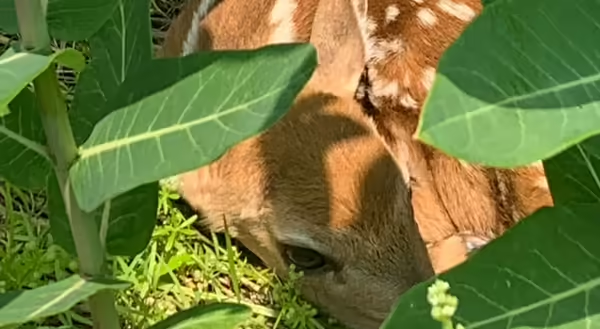
Tough love is hard to give and even harder to receive. But for the white-tailed doe that gives birth to twin fawns each May in Illinois, discipline is necessary for survival.
There’s a common myth that newborn fawns have no scent, making them invisible to predators. While this isn’t entirely true, their scent is extremely faint because their scent glands are not yet fully developed. To minimize detection, the mother carefully selects a secluded spot where her fawns remain hidden—dappled in sunlight for warmth and camouflage—and instructs them to stay motionless until she returns. No matter what, don’t move.
Research conducted in Illinois by Charles Nixon and Dwayne R. Etter, published in the Outdoor Illinois Journal (May 2020), examined fawn survival rates in Illinois based on the mother’s age and experience. The study found that mortality rates are highest among fawns born to two-year-old does. Interestingly, one-year-old does can give birth, but they are still under the guidance of their own mothers. By age two, young does venture out on their own for the first time, often making mistakes that lower fawn survival rates. However, with experience, they improve, developing strategies that increase their fawns’ chances of survival.
Seasoned mothers understand that frequent visits to their fawns increase the risk of detection. They return only twice a day for brief nursing sessions, carefully avoiding excessive contact to prevent their scent from transferring to their young. They also clean up any waste to further reduce scent traces—but they are never far, usually within 100 yards.
As humans, we often struggle with tough love methods. Whether in family, school, work, or friendships, we face moments where firm instruction needs either given or accepted with discipline. Perhaps we can take some lessons from the white-tailed deer: listen to those with experience; follow directions to the letter; sometimes less is more; and discipline will maximize chances for success.
Author: Curt Sinclair, University of Illinois Extension 4-H Youth Development Specialist